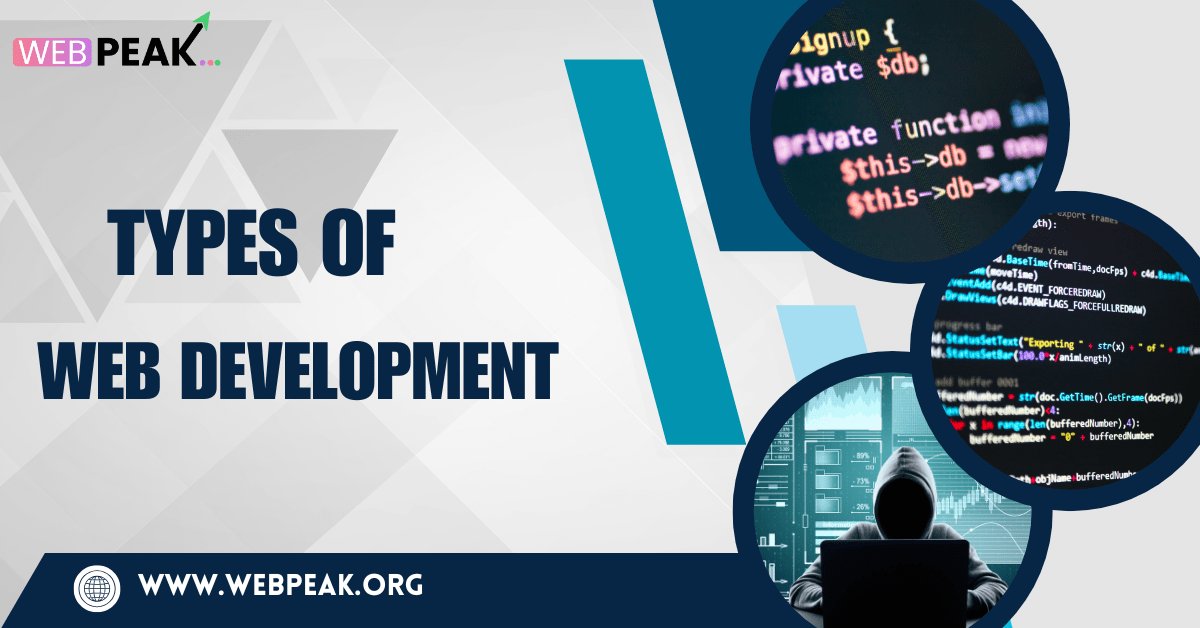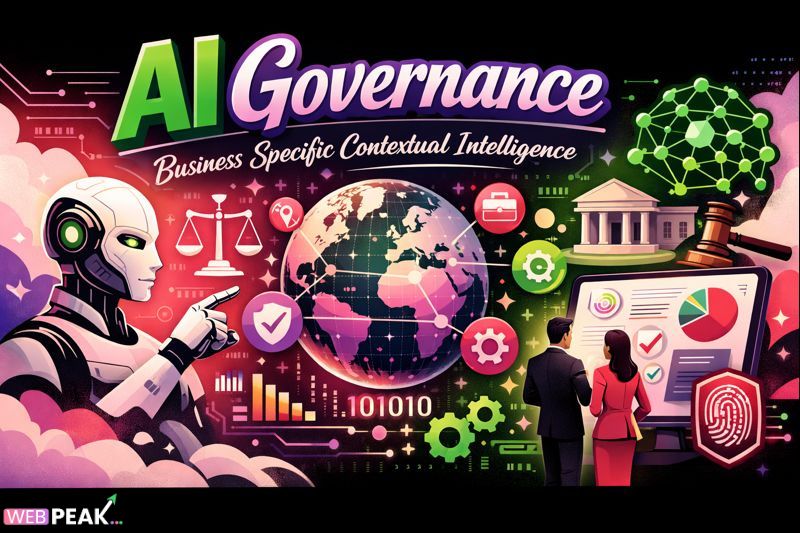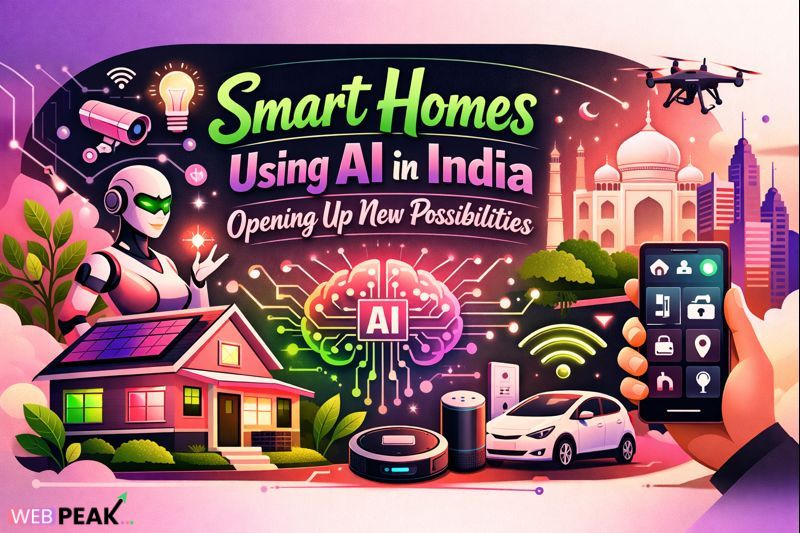Types of Web Development: A Comprehensive Guide
Web development is the backbone of the digital world, responsible for creating, maintaining, and improving websites and web applications. It encompasses a wide range of disciplines and skills, which can be categorized into different types based on their focus and purpose. In this article, we will explore the various types of web development, highlighting their roles and importance in shaping the internet.
1. Front-End Development
What Is Front-End Development?
Front-end development deals with the user interface (UI) and user experience (UX) of a website or application. It focuses on the parts of the website that users interact with directly, such as buttons, menus, and visual elements.
Key Technologies Used:
- HTML (HyperText Markup Language): The foundational language for structuring web content.
- CSS (Cascading Style Sheets): Used for styling the layout, colors, and fonts.
- JavaScript: Adds interactivity and dynamic elements to a website.
Responsibilities of Front-End Developers:
- Ensuring the website is visually appealing and user-friendly.
- Creating responsive designs that work on various devices and screen sizes.
- Optimizing UI performance for faster loading and smooth interactions.
2. Back-End Development
What Is Back-End Development?
Back-end development involves the server-side components of a website. It manages the database, server, and application logic that work behind the scenes to power the website.
Key Technologies Used:
- Programming Languages: Python, PHP, Ruby, Java, C#, and Node.js.
- Databases: MySQL, PostgreSQL, MongoDB, and SQLite.
- Frameworks: Django, Laravel, Express.js, and Spring Boot.
Responsibilities of Back-End Developers:
- Building and maintaining server-side functionality.
- Managing data flow between the database and the front end.
- Ensuring the website or application runs efficiently and securely.
3. Full-Stack Development
What Is Full-Stack Development?
Full-stack development combines both front-end and back-end development. Full-stack developers are skilled in creating an entire web application or website from scratch.
Key Skills:
- Proficiency in front-end and back-end technologies.
- Understanding of server, network, and hosting environments.
- Knowledge of databases and APIs.
Responsibilities of Full-Stack Developers:
- Designing and implementing complete web solutions.
- Troubleshooting and debugging across the full technology stack.
- Collaborating with designers and other developers for cohesive development.
4. Web Development for E-commerce
What is E-commerce Development?
E-commerce Web development focuses on building online stores and shopping platforms. It requires a blend of technical and business acumen to create websites that drive sales and enhance the customer experience.
Key Features of E-commerce Development:
- Product catalogs and search functionality.
- Secure payment gateways.
- Shopping cart and checkout processes.
- Integration with logistics and customer management systems.
Popular Tools and Platforms:
- Shopify: A dedicated e-commerce platform for online stores.
- WooCommerce: A WordPress plugin for creating e-commerce websites.
- Magento: A powerful platform for large-scale online stores.
5. Web Application Development
What Is Web Application Development?
Web application development focuses on creating web-based applications that perform specific tasks or services. These applications are more dynamic and interactive compared to static websites.
Examples of Web Applications:
- Social media platforms like Facebook and Twitter.
- Online tools like Google Docs and Trello.
- Entertainment platforms like Netflix.
Key Technologies:
- JavaScript frameworks like React, Angular, and Vue.js for front-end.
- Backend frameworks like Express.js, Django, and Flask.
- APIs for integrating third-party services.
6. Content Management System (CMS) Development
What Is CMS Development?
CMS development focuses on building systems that allow users to manage and update website content easily without requiring extensive coding knowledge.
Popular CMS Platforms:
- WordPress: Ideal for blogs, portfolios, and small businesses.
- Drupal: A flexible CMS for more complex websites.
- Joomla: Balances ease of use and customization.
Benefits of CMS:
- User-friendly interfaces for non-technical users.
- Scalable for growing content needs.
- Support for themes and plugins to enhance functionality.
7. Mobile-First and Responsive Web Development
What is Mobile-First Development?
Mobile-first development prioritizes designing websites for mobile devices before adapting them to larger screens like desktops. This approach ensures a seamless experience for users on smartphones and tablets.
What Is Responsive Design?
A Responsive design ensures that a website automatically adjusts its layout and elements to fit different screen sizes and resolutions.
Technologies and Tools:
- Bootstrap: A popular CSS framework for responsive designs.
- Media Queries: A CSS technique for applying different styles based on screen size.
- Progressive Web Apps (PWAs): Web applications that offer a mobile app-like experience.
8. Game Development for the Web
What Is Web-Based Game Development?
This type of development involves creating games that can be played directly in web browsers. These games are usually developed using a combination of web technologies.
Technologies Used:
- HTML5 and JavaScript: For creating simple and lightweight games.
- WebGL: For rendering 2D and 3D graphics.
- Game Engines: Tools like Phaser and Unity (with WebGL support).
Examples:
- Casual games like Sudoku and Minesweeper.
- Multiplayer games hosted on browser-based platforms.
9. API Development and Integration
What is API Development and Integration?
API (Application Programming Interface) development focuses on building interfaces that allow different software systems to communicate with each other.
Importance of APIs in Web Development:
- Facilitates integration with third-party services (e.g., payment gateways, social media platforms).
- Enables the creation of microservices for scalable applications.
- Supports the development of mobile and web apps that rely on the same backend.
10. Security-Focused Web Development
What Is Security-Focused Web Development?
Security-focused web development emphasizes protecting websites and applications from cyber threats such as hacking, data breaches, and malware.
Security Practices:
- Implementing HTTPS and SSL certificates.
- Writing secure code to prevent vulnerabilities like SQL injection and XSS attacks.
- Regularly updating software and monitoring for potential risks.
Tools and Techniques:
- Penetration testing to identify weaknesses.
- Using security frameworks and libraries like OWASP.
11. Web Development for Emerging Technologies
What Are Emerging Technologies in Web Development?
This type focuses on integrating new and innovative technologies into web development. Examples include AI (Artificial Intelligence), IoT (Internet of Things), and blockchain.
Key Applications:
- AI-powered chatbots and recommendation systems.
- Blockchain-based decentralized apps (dApps).
- IoT dashboards for controlling connected devices.
Conclusion
Web development is a vast and ever-evolving field that caters to various needs and industries. From front-end esthetics to back-end logic, each type plays a critical role in shaping the digital landscape. Whether you are a beginner exploring your career options or a business seeking to understand your web development needs, understanding these types will help you make informed decisions.




